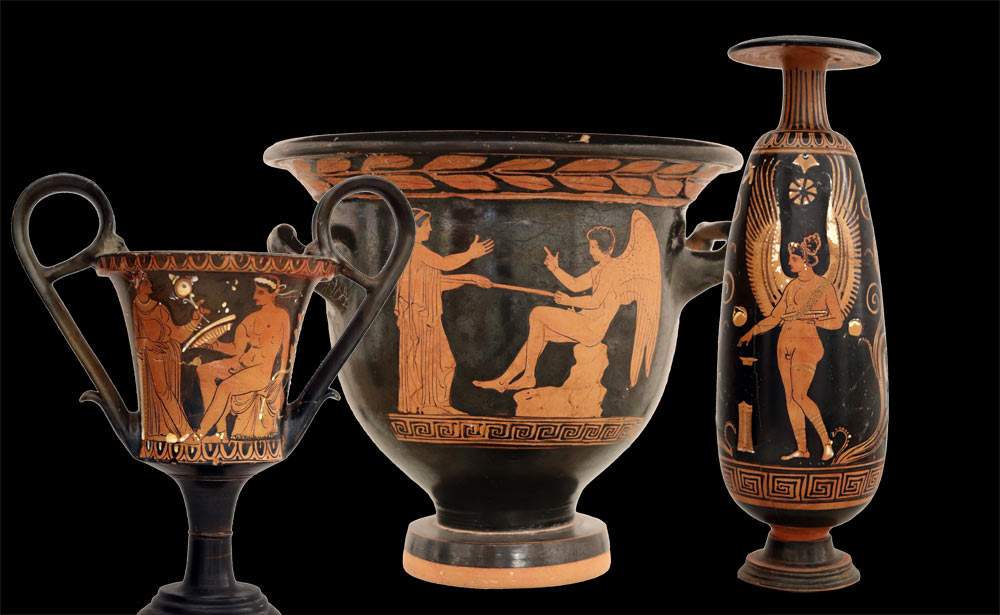The National Museum of Matera triggers a small revolution: it is in fact the first Italian state museum to offer photographs of its collections in open access under a Creative Commons CC BY license: this means that the images are free for any use, even commercial, with the only condition that the images are properly credited. This first experience launched by the Lucanian museum currently concerns only the Rizzon collection, one of the museum’s most famous collections of ancient vases, acquired by the Italian state in 1990 and studied by researchers around the world.
Some Italian museums already make content available to the public and scholars under a Creative Commons license, but with distributions that limit uses, and the only other major museum that uses the same license as the Matera institution is the Egyptian Museum in Turin, which, however, as is well known, is run by a foundation. The National Museum of Matera, on the other hand, is the first museum within the state administration to disseminate its images by licensing them for any purpose. So now the 74 Italiot vases in the Rizzon collection, 63 Apulian and 11 Lucanian, can be viewed online on the dedicated website. There are 735 photographs in all, allowing everyone, visitors and researchers alike, to view the vases from all angles and in close-up. The Creative Commons CC BY license, chosen by the museum, allows anyone to download and use the photographs free of charge for any purpose-all they need to do is credit the source.
Since the establishment of the Matera National Museum in late 2019, the project has been constantly evolving. It was launched in 2020 through a collaboration between the new national museum (one of the autonomous institutes of the Ministry of Culture) and Centre Jean Bérard, after a meeting between Annamaria Mauro, director of the museum, Claude Pouzadoux, then director of Centre Jean Bérard, and Fabien Bièvre-Perrin, then a Marie Sklodowska Curie Individual Fellowship researcher at the École française de Rome / Centre Jean Bérard as part of its “Feminicon” project (now an associate professor at the HisCAnt-MA research center, Université de Lorraine). In connection with the reorganization of the Rizzon collection within the National Museum of Matera, the latter was chosen to lead this original and innovative open access database project. After a photographic campaign conducted in January 2021, the site went online in April 2021, under a CC BY-SA-NC license. Since last December, the photographs have been under a CC BY license, an unprecedented development in Italy for a national public museum.
“The openness of online cultural content, initiated by a few large institutions more than a decade ago and now represented in 49 countries around the world, has been fully confirmed as the future of knowledge dissemination and as strengthening the links between museums and an expanded public of its own,” stresses Martine Denoyelle of the Institut national d’histoire de l’art, who collaborated on the initiative. “In Italy, there is only, to date, one major museum to have adopted Open Content, the Egyptian Museum in Turin. The initiative launched by Fabien Bièvre-Perrin and the Directorate of the Matera Archaeological Museum therefore offers an innovative model, which will certainly give exceptional visibility to the museum’s archaeological collections and the current dynamism of its policy.”
“The digitization of the Rizzon collection conserved at the National Archaeological Museum of Matera, realized thanks to Fabien Bièvre-Perrin’s photographic shots,” explains Mirco Modolo of Creative Commons Italy, “constitutes not only an important initiative in the context of the valorization of an important museum collection, but it should also be appreciated for fully embracing the Open Access philosophy. In this way, the Archaeological Museum of Matera realizes one of the first experiments of free reuse of images from its collections in giving the possibility to anyone to reuse freely and for any purpose the images on the site. A great and important example, perhaps the only one in the state sphere in Italy, which it is hoped will be followed by other public institutions in our country. The free reuse of the digital image of the public cultural asset is in fact the most concrete form of expression of cultural democracy that a museum can manifest today in the digital age.”
In this way, the National Museum of Matera hopes to stimulate exchanges and debates on open access and cultural heritage in Italy, but also in Europe, as well as open the door to other similar initiatives.
 |
| Revolution in Matera: the National Museum is the first state museum to offer open access photos |
Warning: the translation into English of the original Italian article was created using automatic tools. We undertake to review all articles, but we do not guarantee the total absence of inaccuracies in the translation due to the program. You can find the original by clicking on the ITA button. If you find any mistake,please contact us.